Here are 10 examples of great product descriptions to inspire you.
Effective product descriptions aren’t just important – they’re integral to increasing conversions and growing sales. But great product descriptions don’t just happen. The best ones are carefully considered and formed; informative; and accurate.
In other words there’s a lot of thought, research, testing, and revision that goes into crafting the perfect product description.
You might also want to read:
» Is there an ideal product description length?
» E-commerce website problems: are you making these common mistakes?
» Small business e-commerce: why is no one buying from my online store?
If you haven’t paid much attention to the quality of your product descriptions or never had to think much about how to describe what you’re selling, this post is for you—especially now that more consumers are turning to online stores for a wide array of needs.
It doesn’t matter if you’ve just started selling online or if you’re growing your online store, now is the time to consider what you need to do to improve product descriptions and increase online shop conversions.
To help you get started, I’ve compiled some stand-out product descriptions* from around the web to inspire you!
*Note: The inclusion of brand names does not imply nor constitute endorsement, recommendation, or support of any of the linked information, services, products, or providers of any of the products included in this list.
Product Description Examples
Morihata: HA KO paper incense
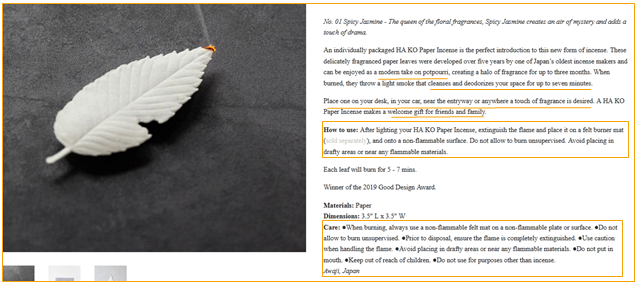
What’s an indicator of excellent copy? When the product description alone makes you want to buy something you don’t actually need and didn’t even know you wanted. In this case: A new form of incense.
Here’s what makes this description great:
- It shares some interesting background about how this product came to be and what you can expect from it. While others may have omitted those details, they don’t assume that the reader automatically knows what this is and how to use it.
- The description gives you ideas where to use this product and also how to care for the product safely.
- They’ve made sure you know that this also makes a great gift, which is a nudge to purchase this again in the future for special occasions.
Takeaway: Selling something new, different, or innovative for its category? A great product description has all the information needed to convince the reader to give the product a try. Don’t leave room for doubt.
Pierre Marcolini: Sicilian Orange Jam
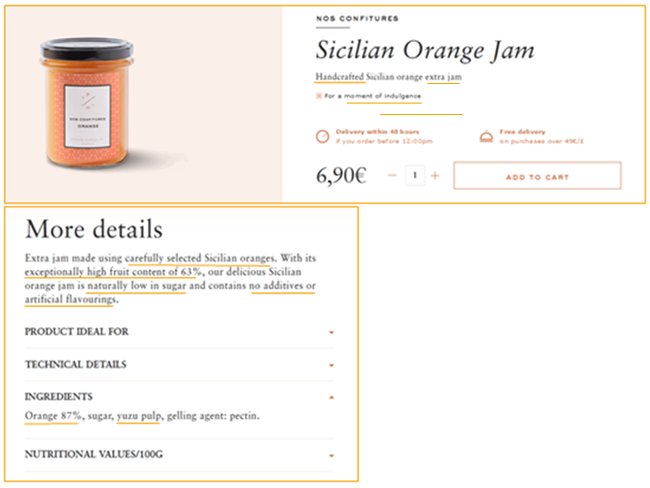
When what you’re selling is on the pricier side for its category of products, you will have to do some extra convincing to get consumers to choose your product. After all, there may be other equally great but cheaper alternatives available.
So why should shoppers splurge on such a product? Well, the answer has to be evident in the description.
Tip: A great description doesn’t have to be a long description – it just has to contain all the key points that matter to consumers. Remember that your choice of words will go a long way in conveying the essence and quality of the product so choose wisely!
This jam’s description is a stellar example—and it all comes down to word choice.
- It’s instantly clear that this isn’t your regular supermarket jam.
- It’s a “handcrafted Sicilian orange extra jam” and it’s “for a moment of indulgence”. In other words, this jam is different; it’s special; and it’s for people who want a superior product. Hence the higher price.
- The words are thoughtfully chosen to reinforce the idea that this is a premium jam.
- “Carefully selected”, “exceptionally high fruit content” (it even tells you the percentage, in case you were skeptical), “naturally low in sugar”, and “no additives or artificial flavourings” creates a certain perception that helps justify the price.
- Finally, to really drive that idea home, there’s the ingredient list: 87% orange and yuzu pulp let you know that they didn’t skimp on the fruits to create this jam.
Takeaway: If you’re marketing a premium product with an equally premium price tag, then why it’s worth buying has to be quickly evident in the description.
Eli & Elm: Organic Cotton Side Sleeper Pillow
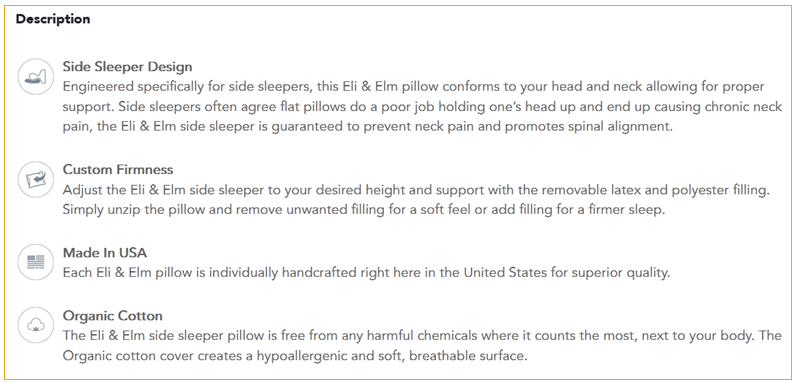
There’s really nothing more annoying than a description that’s hard to understand and simultaneously tough on the eyes – but that’s what you’ll find for a lot of regular household items.
Luckily, these guys don’t make that mistake and that’s why this product is memorable.
- It’s easy to read with good use of white space, introductory headlines, and cute graphic elements to break the monotony of pure text.
- You won’t find industry jargon or unnecessary details to hype up the pillow – it’s straight to the point and uses simple language anyone can understand.
- The copy was written with the shopper in mind. By outlining typical struggles side sleepers will relate to and how this pillow was engineered to fix those exact problems, the text isn’t just highly convincing but also makes the reader feel understood and consequently more trusting of the product.
- The description even throws in some social proof (“side sleepers often agree”) for added emphasis.
Takeaway: Words matter but so does presentation. That includes the logical flow of information and how it’s visually displayed. Be strategic about the details you choose to highlight.
Zoie + Chloe: 100% Silicone Family Size Steamer

We just talked about the importance of presentation when it comes to product descriptions.
The above shows another great approach: The use of bullet points followed by more information in paragraph format.
It works particularly well in simplifying what would otherwise be (1) “boring” / complex information or (2) an unnecessarily lengthy read.
This style makes it easier for readers to quickly find pertinent product-related information. Meanwhile, those that want to know more can choose to read on.
Takeaway: Your product descriptions should be convenient to read. Where possible, consider using bullet points or adding a summarized version of your product description to cater to rushed shoppers and / or those who are unwilling to skim through large chunks of text.
Zojirushi: Induction Heating System Rice Cooker
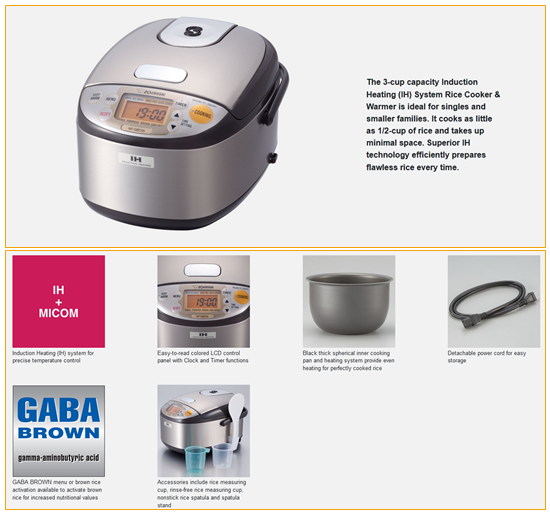
Another great approach to product descriptions is to show and tell. Take a look at how Zojirushi does this.
As you can see, the description includes a graphical breakdown of what makes this rice cooker great. This method has two key advantages:
- It reduces and even eliminates any ambiguity because there are images to go with the descriptions – you know exactly what is being referred to.
- Potential buyers see everything that is included in the purchase price. This is a great strategy for higher priced items.
Takeaway: Where possible, consider the addition of explanatory images to help shoppers understand what they’re reading.
Bella Luna Toys: Senger Organic Cotton Puppy
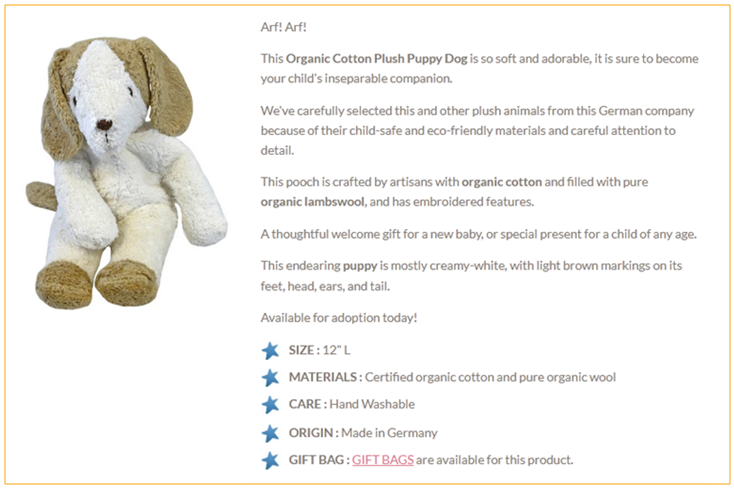
How sweet is this description? It’s cute, fun, and even has personality – managing all that without sacrificing important information.
Also note how it’s written to appeal to the sensibilities of the parent (the buyer) with a youthful touch that indicates the end user: The child.
- The copy is sprinkled with cutesy, age-appropriate language (“arf, arf”, “available for adoption today”) but still carries a reassuring tone in that it makes sure to address parents’ primary concerns: Product safety.
- You know exactly what this toy is made of, where it’s made (as an indicator of quality), and that it’s safe for your most loved little one to snuggle with.
- Descriptive language is used since online shoppers aren’t able to touch or interact with the product before buying.
Those details are what makes this such a great product description!
Takeaway: You can be reassuring and professional yet still have fun with descriptions! Don’t be afraid to infuse product descriptions with your brand’s unique personality. It humanizes your brand, adds charm, and – when done right – can even make you more appealing than the competition.
KLEN: Anti-dandruff shampoo
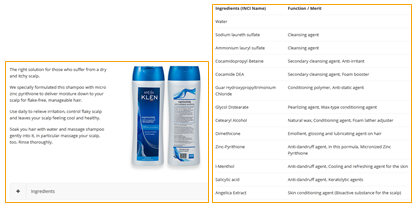
Here’s an example of a product description that is in tune with the times.
There was a time when shoppers didn’t put all that much thought into the shampoo they were buying, save for the scent, promised function, and price. But times have changed.
Customers now want to know what they’re putting on their skin—or in their hair—and if all those ingredients are safe or even necessary.
That’s why KLEN’s product description really stands out. They don’t just list the ingredients – they explain what each item does.
Takeaway: Transparency goes a long way in building trust and winning consumers’ confidence – not just in skin and beauty products, but in general. Also, keep up with trends in purchase preferences and behaviour.
Häagen-Dazs: Crispy Layers
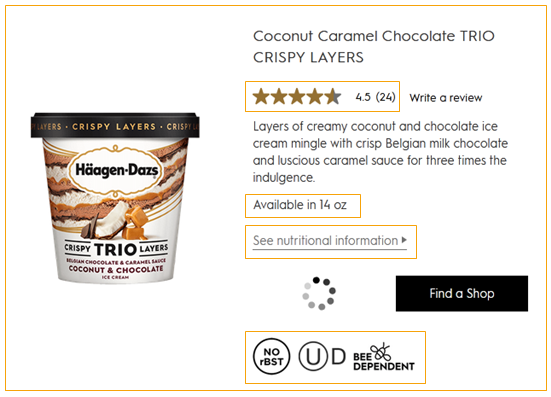
If you weren’t hungry for ice cream before, I bet you are now. That’s a sign of effective copy.
Here’s how they get it right.
- It makes your mouth water with rich, descriptive text that gets you imagining all those flavours melting in your mouth. Side effect? Cravings! Chances are, this ice cream will find its way on to your next grocery list.
- There’s super easy access to social proof in the form of reviews. If you aren’t sure that you’ll like the flavour, just read what others have to say about it!
- It’s a short but sweet description that contains all legally required information plus differentiators. For example: The milk used is hormone-free and this product is bee dependent.
Takeaway: Use sensory words for food and beverage product descriptions. Sensory words whet the appetite and awaken the reader’s desire to consume that product – that’s good for sales.
Terre Exotique: Red Kampot Pepper
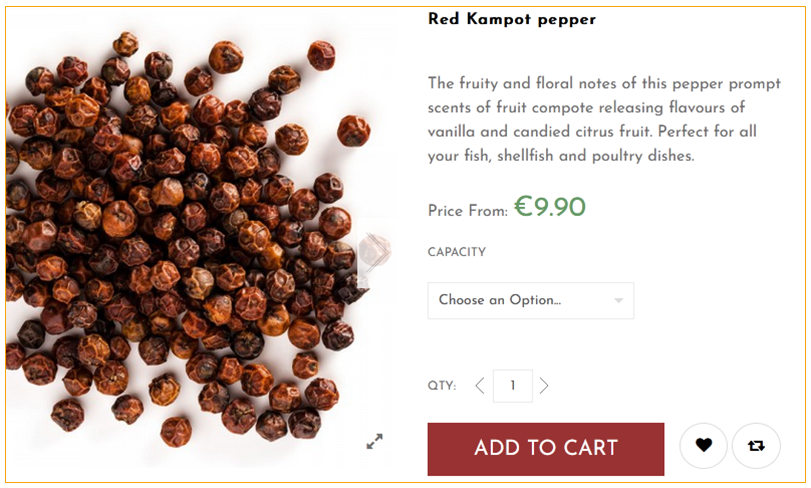
Unless you’re a chef or in the restaurant business, chances are you don’t really know all that much about pepper.
What should you expect of this premium red pepper? How can you get the best out of it?
This product description answers those questions for you in just two sentences. You know what kind of flavour profile awaits and how to use it in your cooking. That’s enough to pique interest and get you excited to give the product a try.
Takeaway: Don’t assume consumers know how to best use your product – even if it’s an everyday, low involvement product. Take the opportunity to open their eyes to the many uses or possibilities that can be enjoyed.
Leica: V-Lux 5
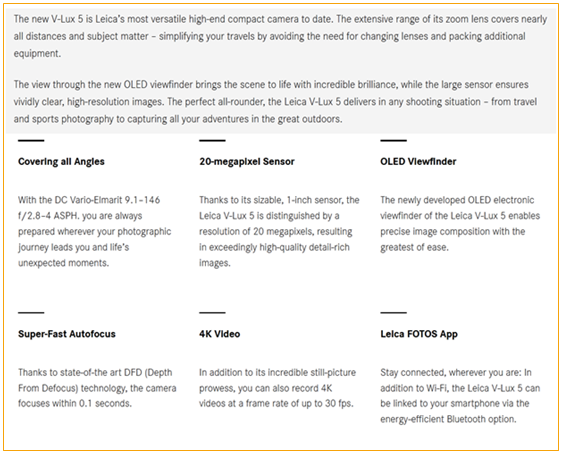
A potential customer can’t appreciate how great your product is – and therefore choose to buy it – if the description is overly complicated or filled with industry jargon.
That’s why great product descriptions tend to use simple language that the average shopper can understand—no matter how technically complex the product might be.
Note: The term “great” is of course entirely subjective – it depends on who is reading the description. That’s why knowing who your customers are (and understanding them) is so important in copywriting.
Leica’s description is the perfect example of this put into action because:
- Even newbie hobby photographers will understand what makes this a powerful camera to have on hand;
- Those who have more camera knowledge can appreciate the inclusion of technical specifications for their review.
Takeaway: You’ve heard this a million times before but it has to be said again: Don’t just list features—highlight benefits. It’s OK to use technical terms in your product descriptions as long as you make sure you explain what they mean and/or why it matters.